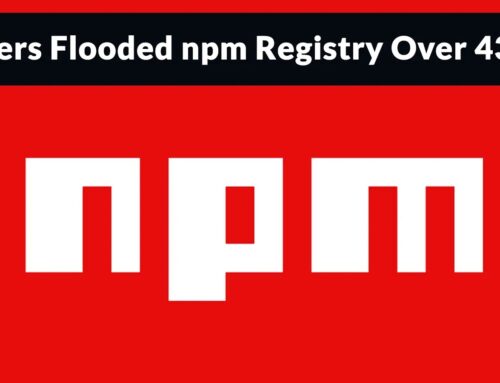
Critical Imunify360 AV Vulnerability Exposes 56 Million Linux-hosted Websites to RCE Attacks
A silent threat recently emerged, casting a long shadow over the stability of millions of Linux-hosted websites. Imunify360 AV, a widely deployed security solution trusted by countless administrators, was found harboring a critical remote code execution (RCE) vulnerability. This flaw, subsequently patched by CloudLinux, presented a direct pathway for attackers to seize control of compromised servers, impacting an estimated 56 million websites.
For IT professionals, security analysts, and developers, understanding the intricacies of such vulnerabilities is paramount. This incident underscores the constant vigilance required in the cybersecurity landscape, even with seemingly robust protection layers in place. We’ll delve into the specifics of this RCE vulnerability, its potential impact, and the crucial steps necessary for remediation.
The Imunify360 RCE Vulnerability: A Deep Dive
Researchers at Patchstack uncovered a significant flaw within Imunify360 AV’s deobfuscation logic. Imunify360 is known for its advanced malware scanning, proactive defense, and powerful deobfuscation capabilities, designed to unravel encrypted or disguised malicious code. Ironically, it was this very deobfuscation process that introduced the critical vulnerability.
The vulnerability, tracked as CVE-2023-50077, specifically allowed for remote code execution. This means an attacker, without direct access to the server, could craft a malicious input that, when processed by Imunify360’s deobfuscator, would execute arbitrary commands on the underlying Linux system. The implications are severe: from data exfiltration and website defacement to complete server takeover and the installation of further malware.
The fact that Imunify360 is deeply integrated into many hosting environments makes this vulnerability particularly concerning. Its widespread adoption meant a single flaw could potentially expose a vast number of websites simultaneously.
Understanding the Impact: Beyond a Single Server
The estimate of 56 million affected websites is staggering. This number highlights the interconnectedness of modern web infrastructure and the ripple effect a single vulnerability in a widely used security tool can have. A successful RCE attack on a hosting server could lead to:
- Website Defacement: Attackers could alter website content, inject malicious scripts, or replace entire pages with their own.
- Data Breach: Sensitive customer or user data stored on the server could be exfiltrated, leading to privacy violations and compliance issues.
- Malware Distribution: Compromised servers can be used to host and distribute further malware, turning legitimate websites into vectors for cyberattacks.
- Resource Hijacking: Servers could be co-opted for cryptocurrency mining, denial-of-service attacks, or other illicit activities, impacting legitimate services.
- Reputational Damage: For businesses and organizations, a security incident of this magnitude can severely damage trust and reputation.
The vulnerability’s presence in a security product designed to protect websites adds another layer of complexity. It underscores the critical need for robust security-by-design principles and continuous auditing of security solutions themselves.
Remediation Actions: Securing Your Linux-Hosted Websites
CloudLinux, the developers behind Imunify360, acted swiftly upon the discovery of the vulnerability, rolling out patches to address CVE-2023-50077. Immediate action is required for any system administrator or hosting provider utilizing Imunify360 AV.
Here are the crucial steps:
- Prioritize Patching: Ensure your Imunify360 AV installation is updated to the latest version immediately. CloudLinux has released patches that mitigate this specific RCE vulnerability. Consult your Imunify360 dashboard or hosting provider for update instructions.
- Verify Patch Application: After applying the update, confirm that the patch has been successfully installed and the vulnerability addressed.
- Scan for Compromise: Conduct thorough scans of your servers for any signs of compromise or malicious activity that may have occurred before patching. Look for unusual files, unexpected processes, or unauthorized network connections.
- Review Logs: Scrutinize server logs, web server logs, and Imunify360 logs for any suspicious entries around the time the vulnerability was public or prior.
- Implement Least Privilege: Ensure that Imunify360 and other security tools operate with the minimum necessary privileges to perform their functions.
- Regular Backups: Maintain consistent and secure backups of your website data and server configurations. In the event of a successful attack, a clean backup can be a lifeline.
- Stay Informed: Continue monitoring cybersecurity news and advisories from CloudLinux and other security vendors to stay ahead of emerging threats.
Essential Tools for Post-Vulnerability Assessment
After patching, verifying the integrity of your systems is essential. Several tools can assist in detecting potential compromises or reinforcing your security posture:
| Tool Name | Purpose | Link |
|---|---|---|
| ClamAV | Open-source antivirus engine for scanning email and web content for malware. | https://www.clamav.net/ |
| Lynis | Security auditing tool for Linux systems; performs extensive health scans. | https://cisofy.com/lynis/ |
| Rootkit Hunter (rkhunter) | Scans for rootkits, backdoors, and local exploits. | http://rkhunter.sourceforge.net/ |
| OSSEC | Host-based Intrusion Detection System (HIDS) for log analysis, file integrity checking, and rootkit detection. | https://www.ossec.net/ |
| Maldet (Linux Malware Detect) | Malware scanner for Linux environments, specifically designed for shared hosting. | https://www.rfxn.com/projects/linux-malware-detect/ |
Conclusion
The Imunify360 RCE vulnerability, CVE-2023-50077, serves as a stark reminder of the complexities inherent in securing critical infrastructure. Even specialized security tools can harbor undiscovered flaws. For administrators managing Linux-hosted websites, the immediate priority is to ensure all Imunify360 installations are fully patched. Beyond that, a proactive defense strategy combining regular updates, diligent monitoring, and a layered security approach remains the most effective defense against the persistent threats that characterize the digital world.





